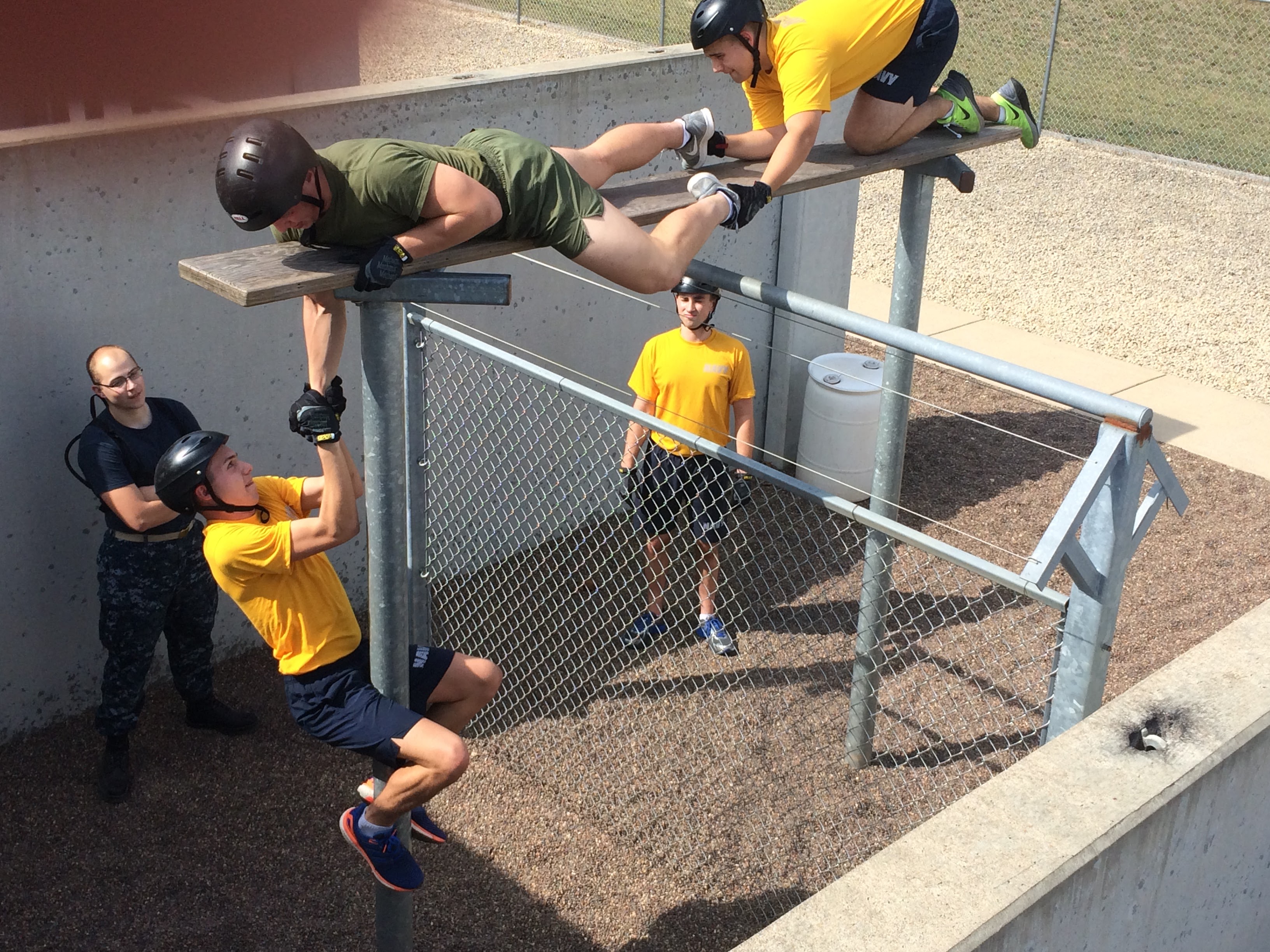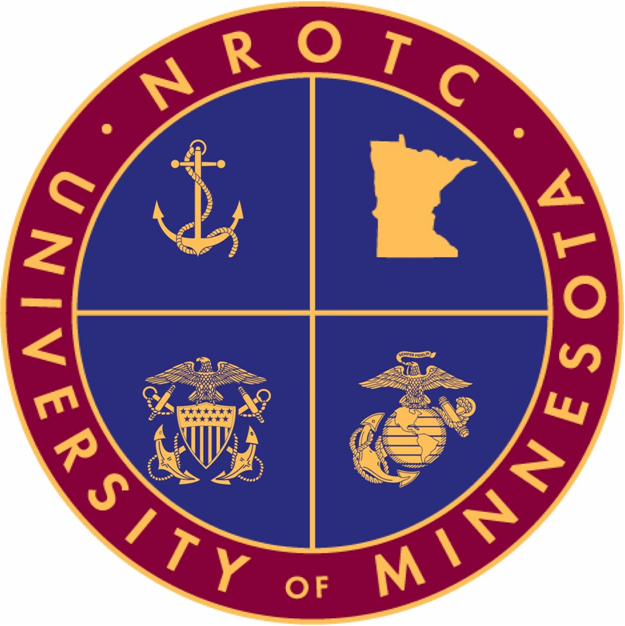Major Events from Orientation to Graduation
JOINING NROTC
Prospective NROTC students may or may not have matriculated into college. High School Seniors may apply for a 4-year scholarship. Students already in college may join the NROTC unit, so long as it is not too late in their college careers. The best way to learn more about applying for scholarships or joining the NROTC unit is to contact the University directly, or visit.
NSO - New Student Orientation

PME - PROFESSIONAL MILITARY EDUCATION
One of the core requirements of the NROTC program is Professional Military Education. In essence, this training equips future leaders in the Navy and Marine Corps with the skills they will need for the Fleet. Midshipmen wear their uniforms, participate in discussions, showcase drill routines, and receive knowledge handed down from the Unit Staff. PME at the University of Minnesota, also called “Lead Lab”, is conducted once per week, historically on Tuesday mornings. Training is facilitated by the Officers and Midshipmen alike.
PHYSICAL TRAINING
Physical Training (PT) is a cornerstone of military service, and the Naval ROTC is no exception. Midshipmen are expected to be in excellent physical shape. At a minimum, Navy-option Midshipmen are expected to pass the Physical Readiness Test (PRT), which consists of a 1.5 mile run, 2 minutes push-ups, 2 minutes sit-ups. Marine-option Midshipmen must pass the Physical Fitness Test (PFT), which consists of a 3 mile run, pull-ups until failure, and timed sit-ups. PT is conducted in the morning 1-3 days per week. Midshipmen are expected to work-out on their own time in addition to PT sessions.
“PT is the best times of the week when I can bond and connect with my fellow Midshipmen. The mutual struggle through PT makes us all closer.” -Midshipman Matthew Brigadier, Class of 2018.
BILLETS
Billets are different jobs and responsibilities Midshipmen can be assigned for each semester. Billets in NROTC mirror billets students may have as Junior Officers in the Fleet. They can be broken up into two main categories: leadership and logistics. Top to bottom on the leadership side, there is the Battalion Commander, Battalion Executive Officer, Command Master Chief or Command Sergeant Major, the Alpha or Charlie Company Commanders, Senior Chief and First Sergeant of those companies, and then Squad Leaders. On the logistics side, there are positions such as Operations Officer, S3-A, Adjutant, Battalion and Company Guides, Public Affairs, Recruiting, Special Events, Information Systems, Supply, Volunteering, Fundraising, Morale, Welfare and Recreation (MWR), Education Duty, Mentoring, Cameras, and Drill Commanders. The combination of all these jobs is what keeps the unit functioning, and communication is key! Over the course of their four years, Midshipmen hold a wide range of billets and responsibilities which provide valuable skills that can be included on their résumés.
SPECIAL EVENTS
Many of the more enjoyable parts of the academic year in NROTC take place outside of Leadership Lab and PT. Midshipmen engage in volunteering, joint military athletic competitions and reviews, highway clean-up, gun range days, fall and spring field training exercises, family night, dining-in, an annual 5K, and others.
CORTRAMID - Career Orientation Training for Midshipmen
CORTRAMID typically takes place during the summer between the freshman and sophomore year in either San Diego, California or Norfolk, Virginia. It is a month-long Navy-Marine Corps sampler where a week is spent with four communities: Surface, Submarines, Aviation, and Marine Corps. Midshipmen get hands-on experience, insight into the communities from current officers, and meet with midshipmen from other ROTC units around the country.
1/C CRUISE or OCS - Officer Candidates School
First Class (1/C) Cruise, for Navy Options, takes place during the summer between the junior and senior year. Individuals get to put in preferences for cruise time and community. They may go on a surface cruise, a submarine cruise, an aviation cruise with jets, helicopters, or maritime aircraft, or foreign exchange programs. Once there, the Midshipmen are assigned to a junior officer running mate to shadow and learn about day-to-day activities on the ship, sub, or in the squadron. While there is no established curriculum, embarking on a First Class cruise is a requirement for commissioning for Navy-option Midshipmen.
OCS, for Marine Options, also takes place during the summer between the junior and senior year. Midshipmen go to Quantico, Virginia for 6 weeks to train and be evaluated in rigorous physical activities and leadership reaction exercises. Completing Officer Candidates School is a requirement for commissioning for Marine-option Midshipmen.
SERVICE SELECTION
Service selection is a most exciting and culminating moment for Navy-Option Midshipmen. The summer before senior year, students rank their preferences for the Navy community in which they would like to serve. These options include Surface Warfare, Submarine Warfare, Surface Nuclear, Pilot, Naval Flight Officer, Special Warfare (SEALs or Explosive Ordnance Disposal [EOD]), and in special cases, restricted line positions. Choice of service community is not guaranteed, however high-performing Midshipmen are usually given their first choice. The University of Minnesota NROTC program is well known among other units for producing quality Officers, and historically have a high rate of students have received their first choice. Surface Nuclear and Submarine candidates must complete a Nuclear Assessions Interview prior to being accepted into one of those communities, during which they answer technical questions about Calculus and Physics.
